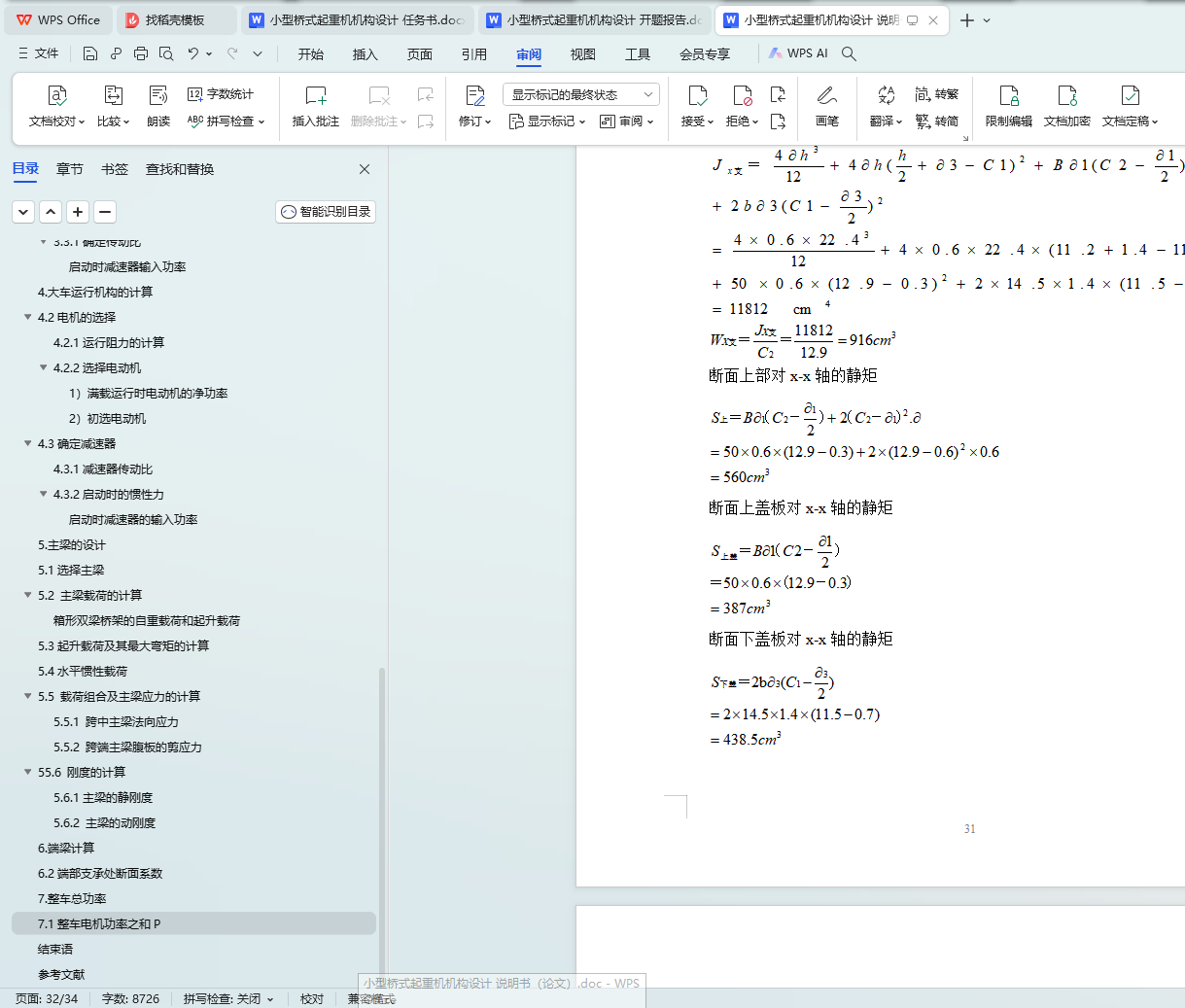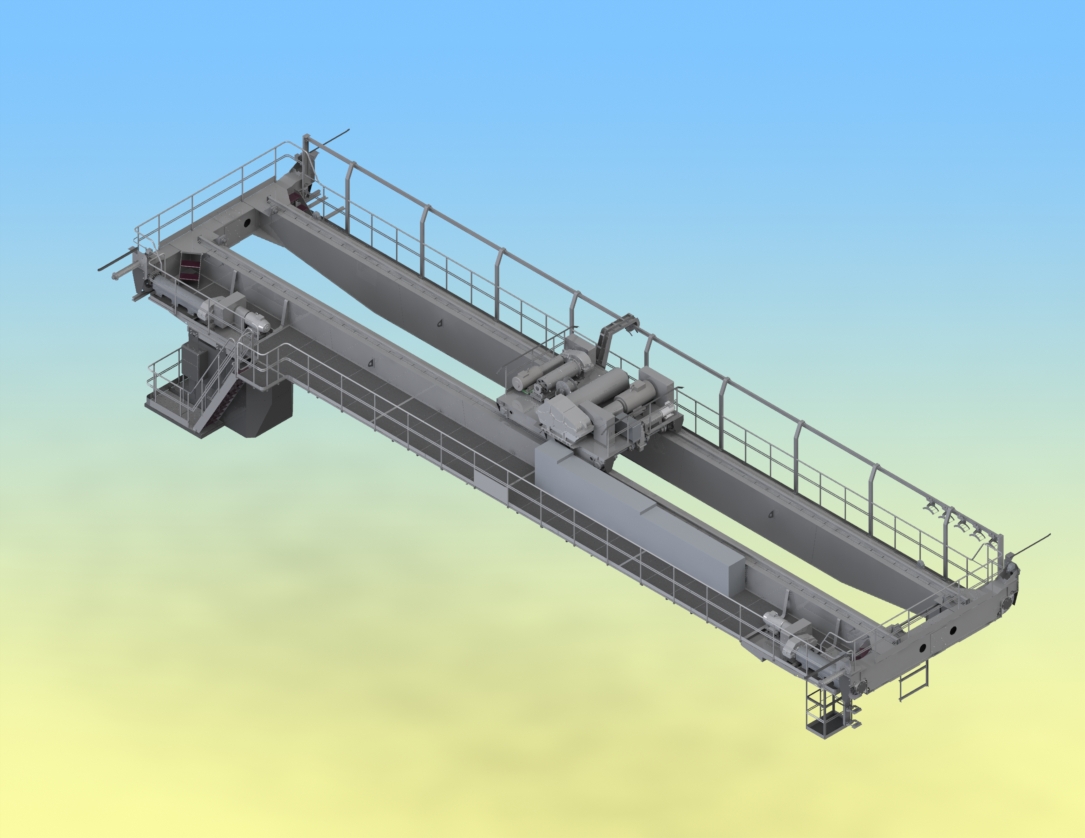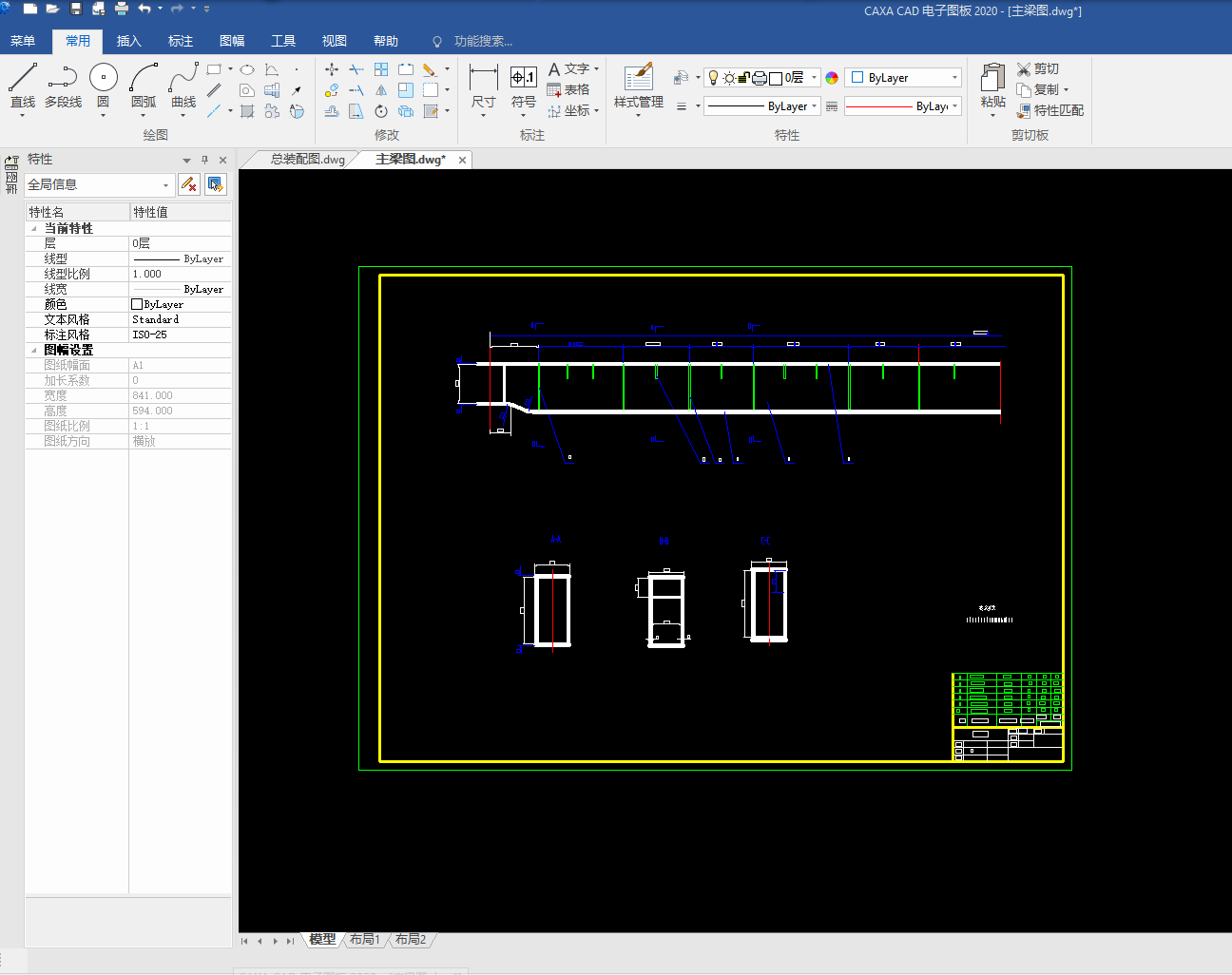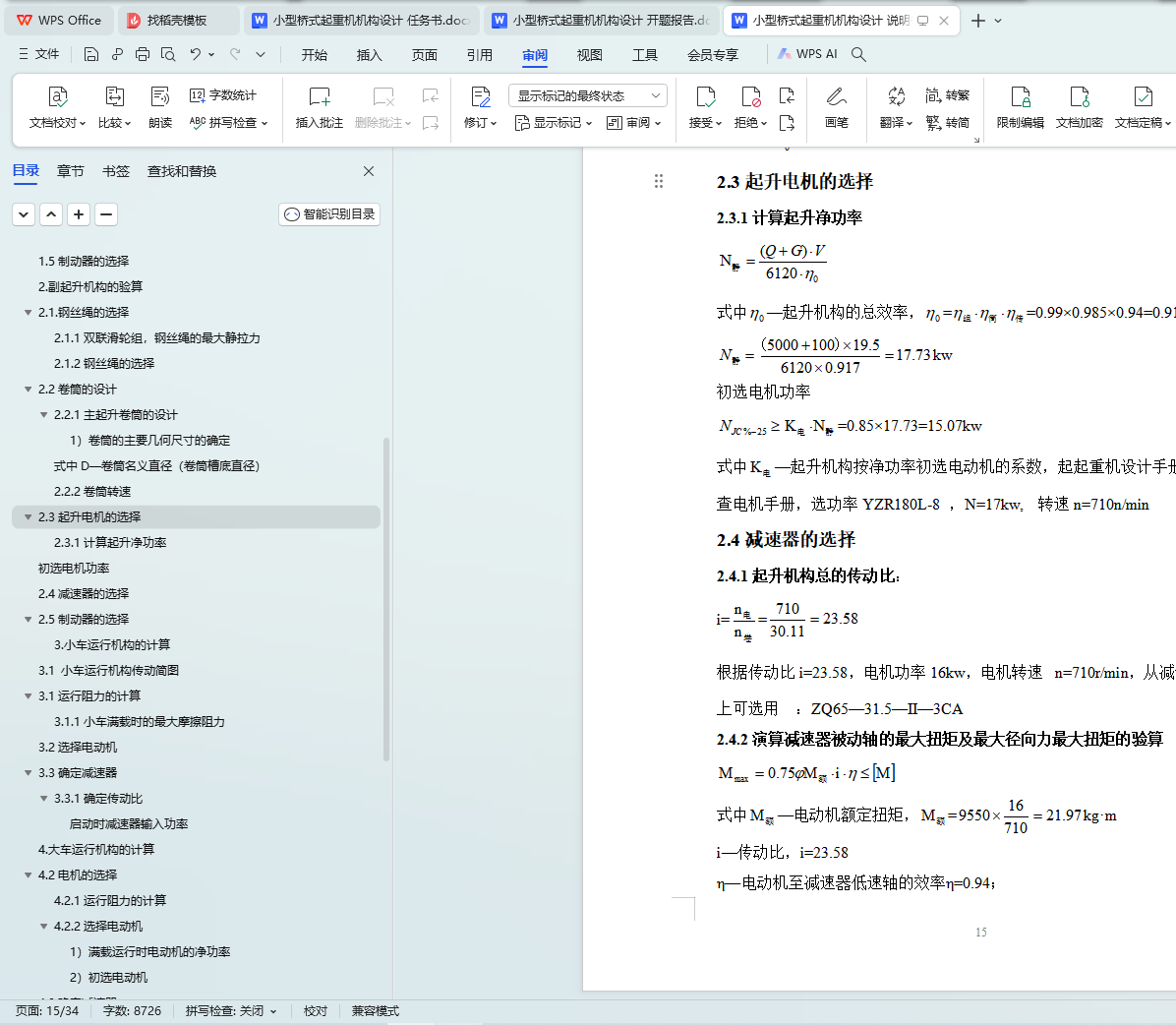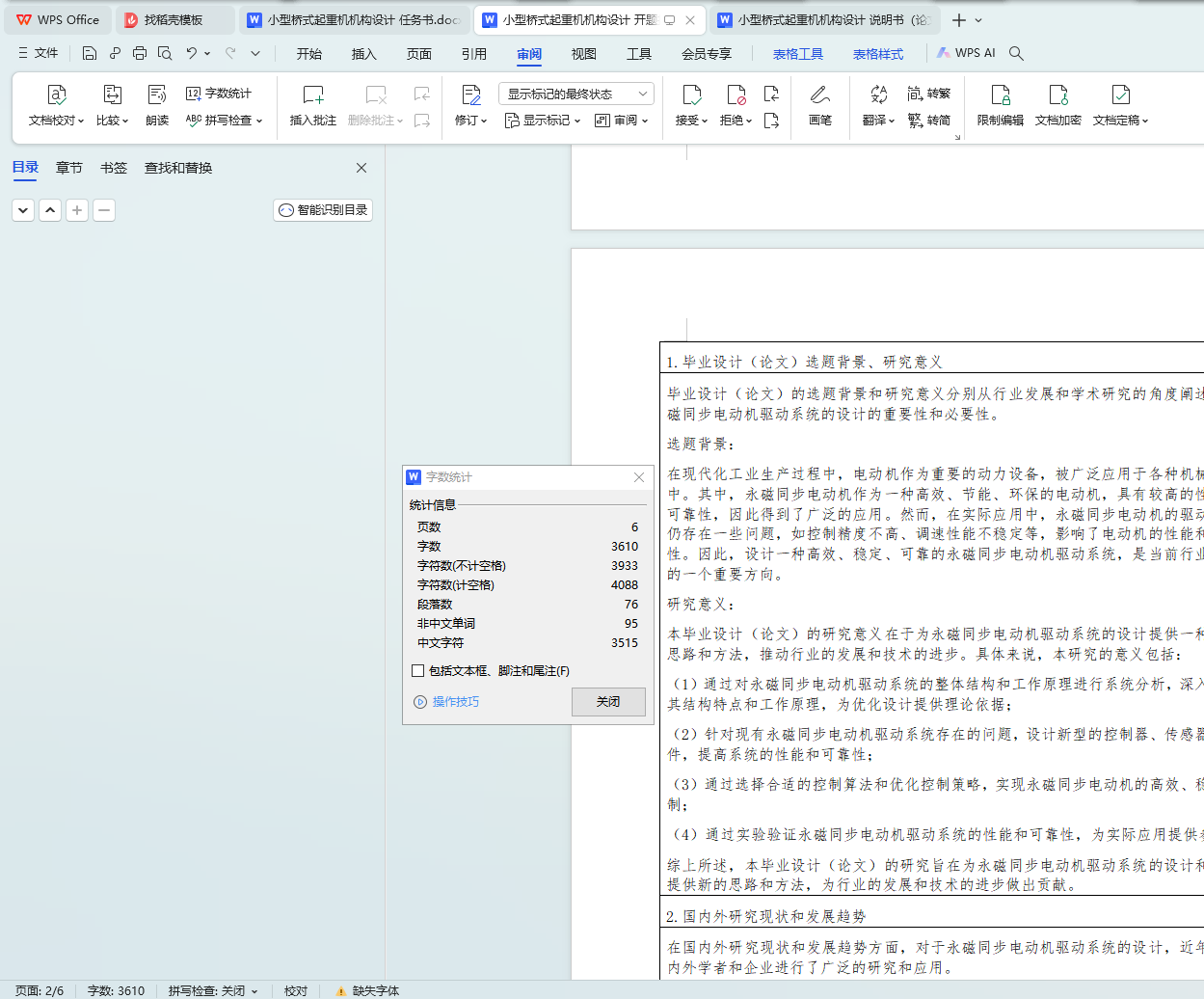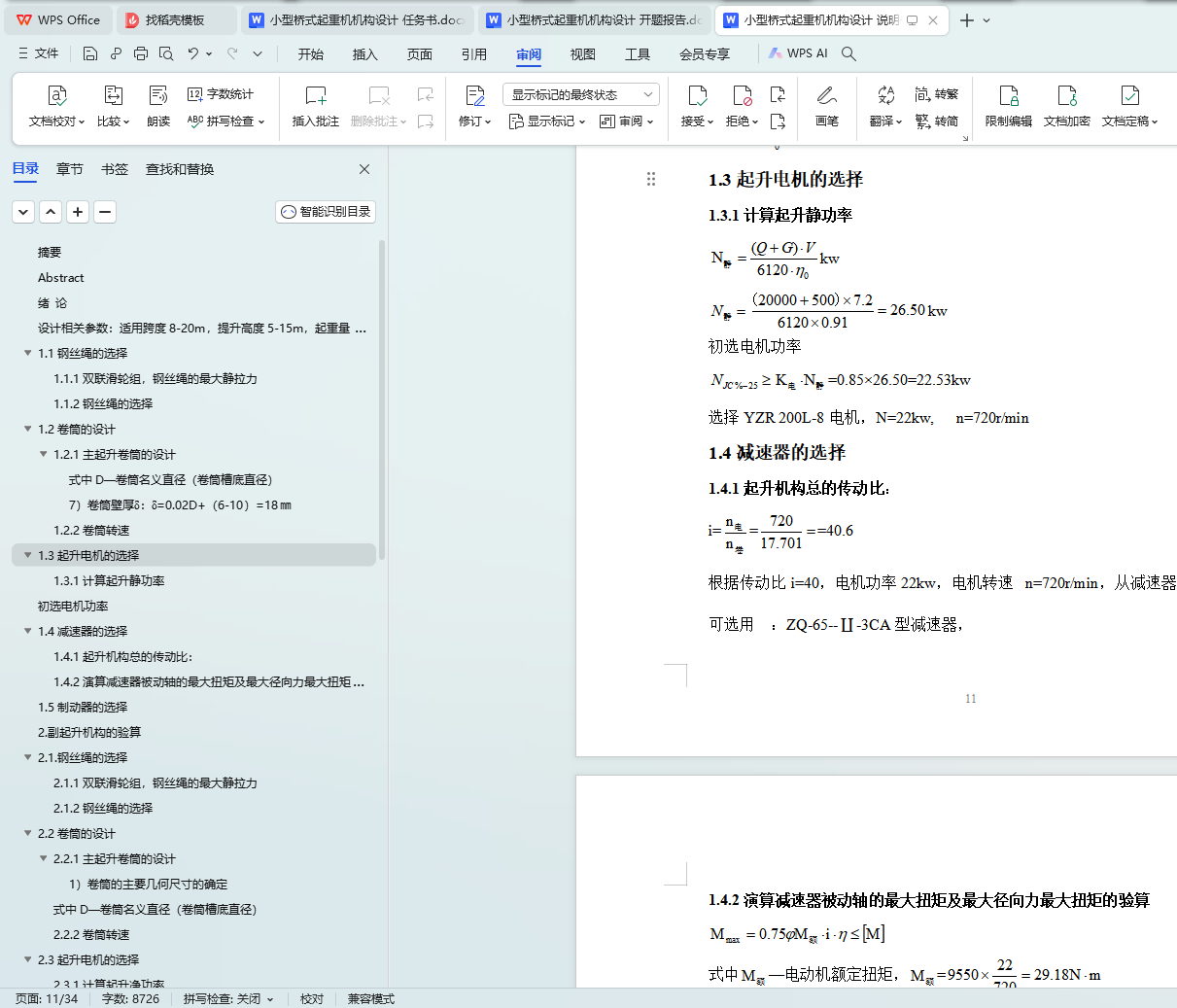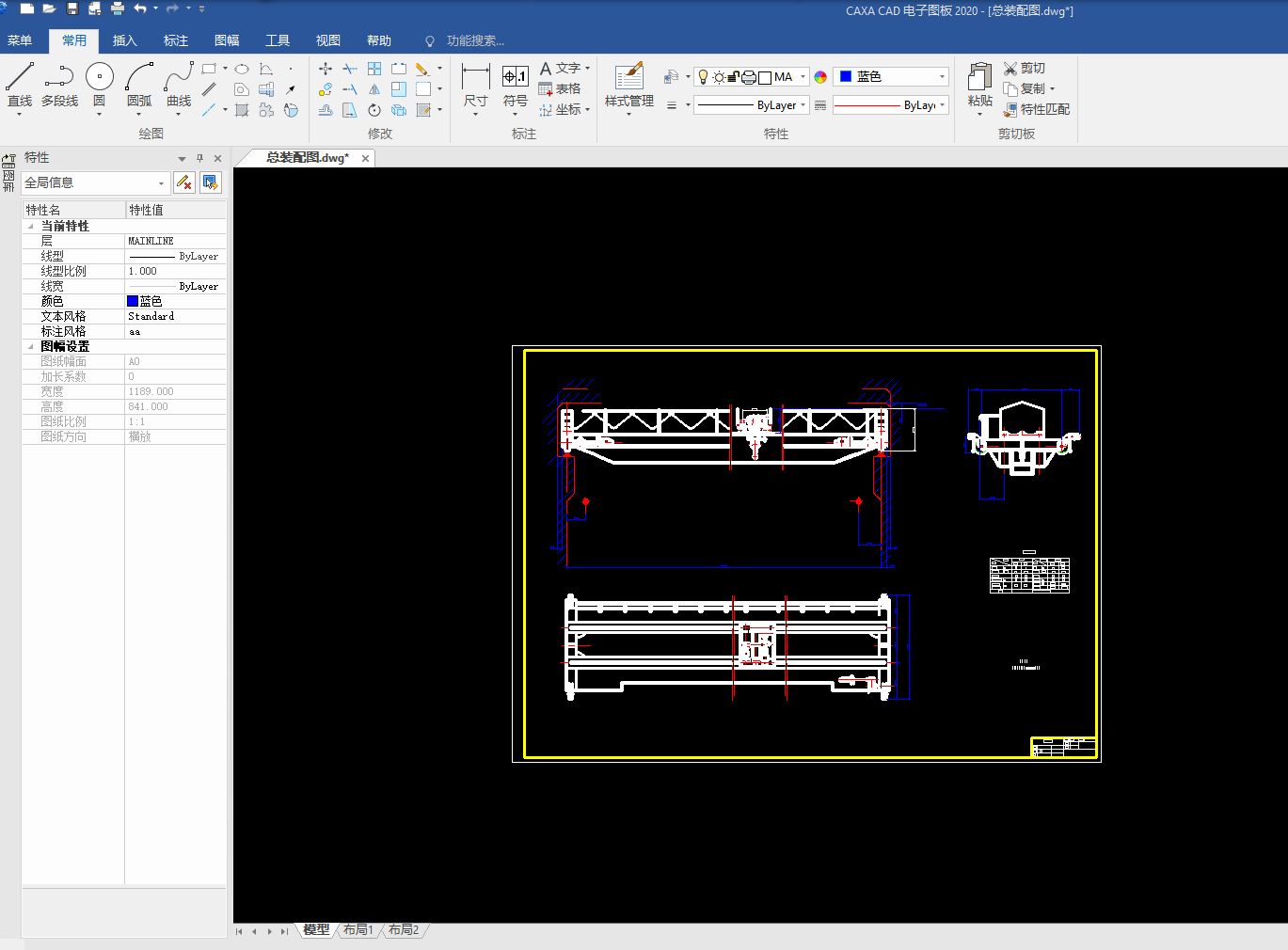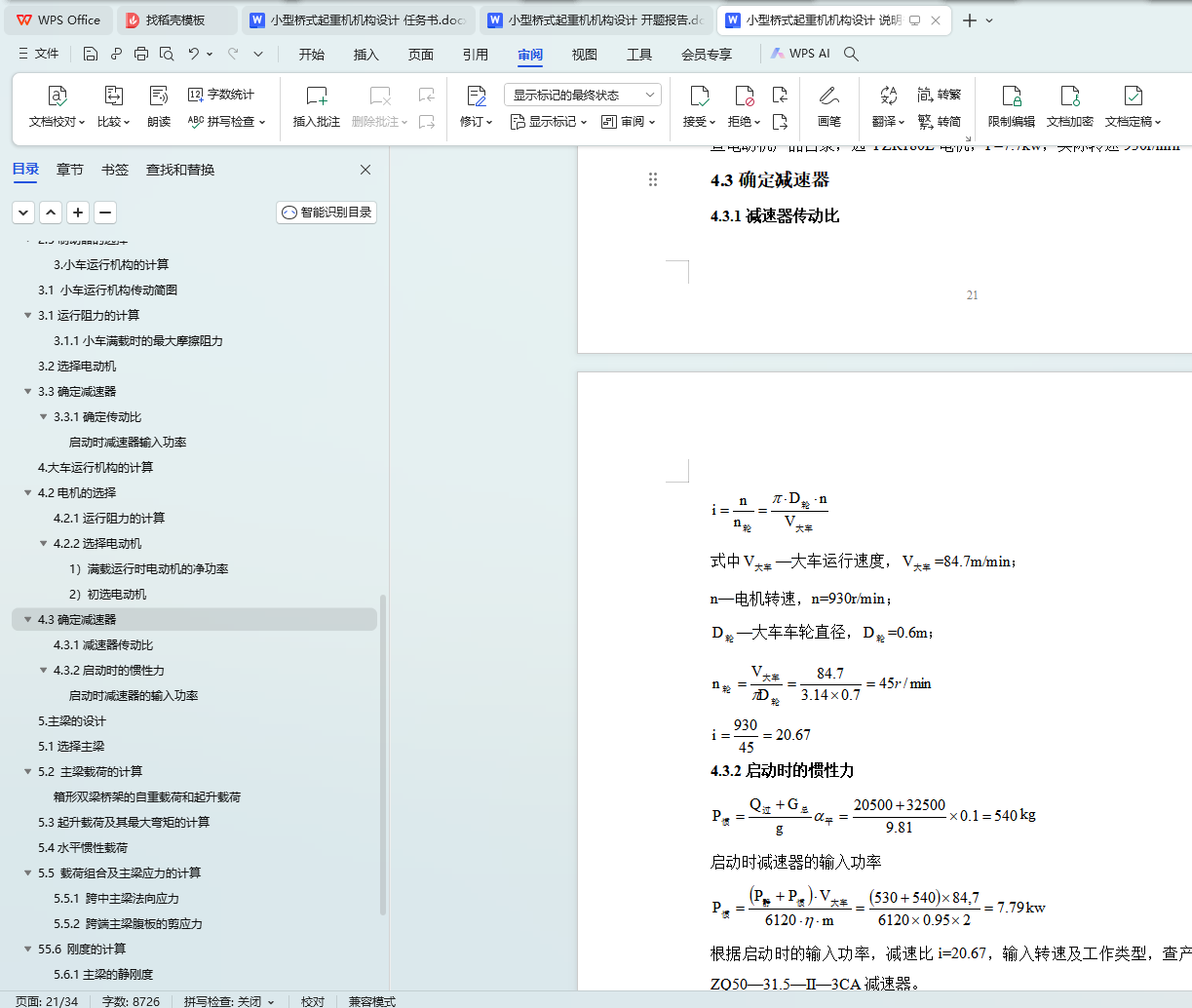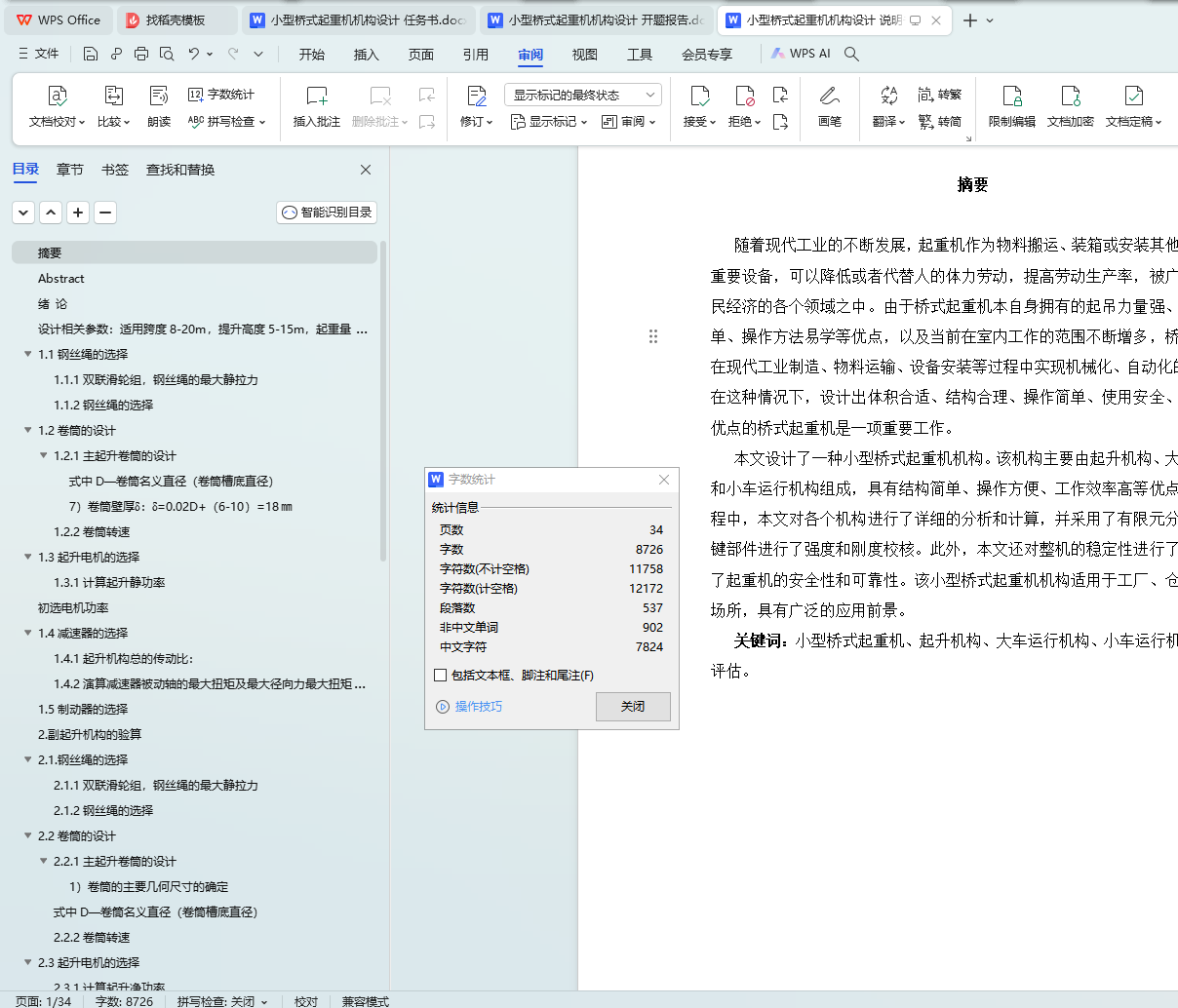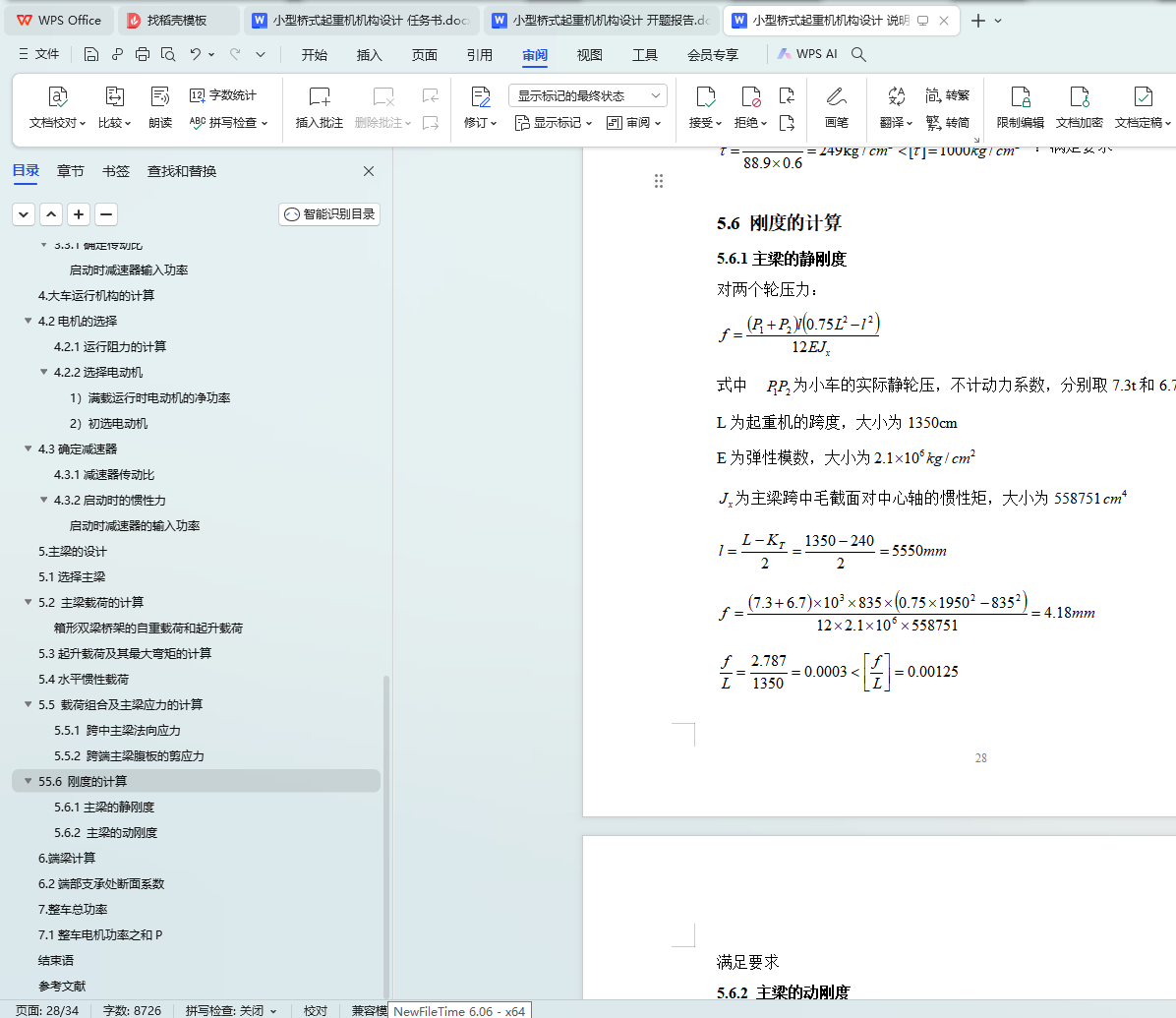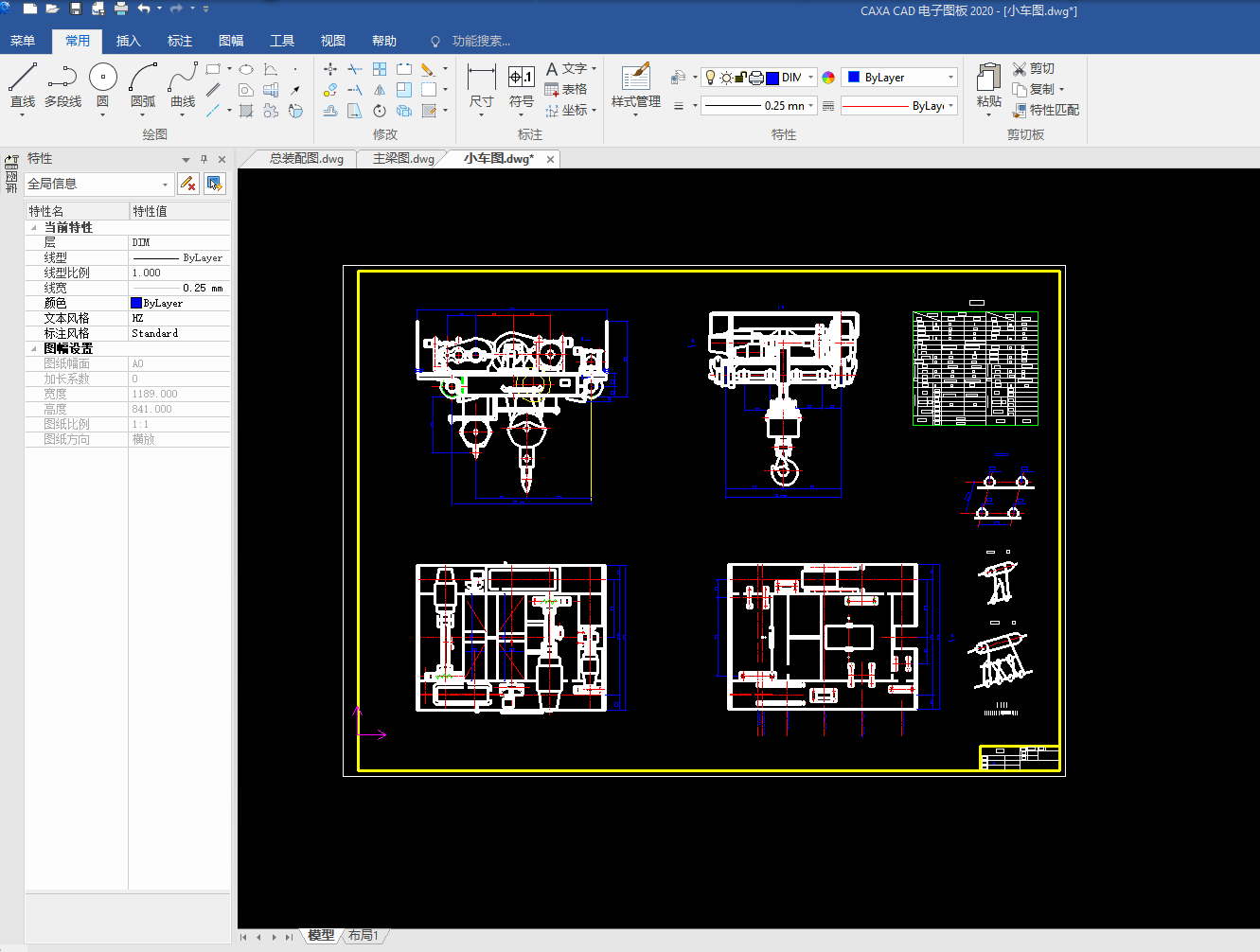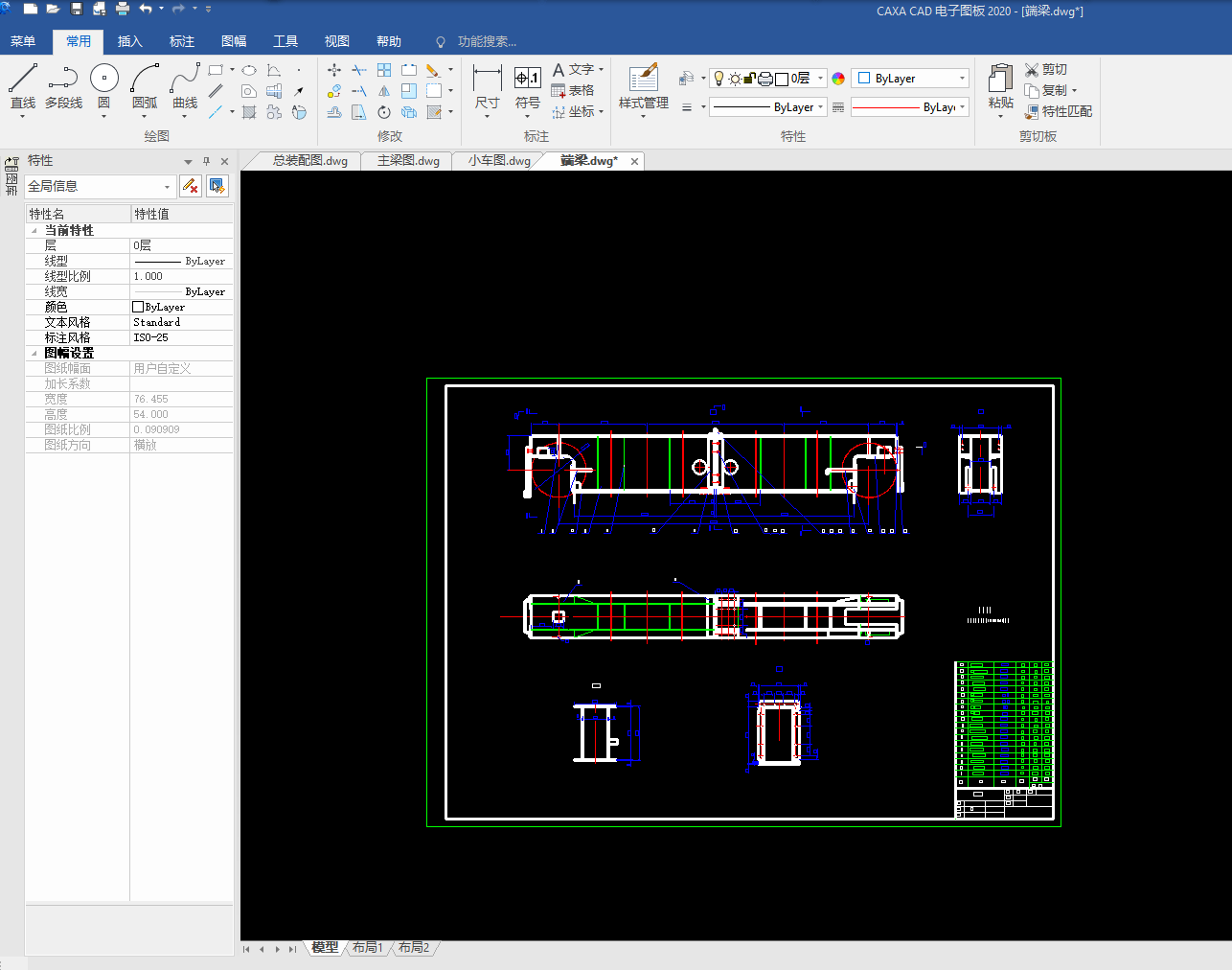摘要
随着现代工业的不断发展,起重机作为物料搬运、装箱或安装其他机械产品的重要设备,可以降低或者代替人的体力劳动,提高劳动生产率,被广泛应用于国民经济的各个领域之中。由于桥式起重机本自身拥有的起吊力量强、制造工艺简单、操作方法易学等优点,以及当前在室内工作的范围不断增多,桥式起重机是在现代工业制造、物料运输、设备安装等过程中实现机械化、自动化的重要设备。在这种情况下,设计出体积合适、结构合理、操作简单、使用安全、维护方便等优点的桥式起重机是一项重要工作。
本文设计了一种小型桥式起重机机构。该机构主要由起升机构、大车运行机构和小车运行机构组成,具有结构简单、操作方便、工作效率高等优点。在设计过程中,本文对各个机构进行了详细的分析和计算,并采用了有限元分析方法对关键部件进行了强度和刚度校核。此外,本文还对整机的稳定性进行了评估,确保了起重机的安全性和可靠性。该小型桥式起重机机构适用于工厂、仓库、码头等场所,具有广泛的应用前景。
关键词:小型桥式起重机、起升机构、大车运行机构、小车运行机构、稳定性评估。
Abstract
With the continuous development of modern industry, cranes, as an important equipment for material handling, packing or installing other mechanical products, can reduce or replace human manual labor and improve labor productivity, and are widely used in various fields of the national economy. Due to the bridge crane itself has strong lifting force, simple manufacturing process, easy to operate methods and other advantages, as well as the increasing scope of indoor work, bridge crane is an important equipment in modern industrial manufacturing, material transportation, equipment installation and other process of mechanization, automation. In this case, it is an important task to design a bridge crane with suitable volume, reasonable structure, simple operation, safe use and convenient maintenance. In this paper, a small bridge crane mechanism is designed.
The organization is mainly composed of the lifting mechanism, the cart running mechanism and the trolley running mechanism, which has the advantages of simple structure, convenient operation and high work efficiency. In the design process, this paper has conducted a detailed analysis and calculation, and the finite element analysis method is used to check the strength and stiffness of the key components. In addition, the stability of the whole machine is also evaluated to ensure the safety and reliability of the crane. The small bridge crane mechanism is suitable for factories, warehouses, docks and other places, and has a wide range of application prospects.
Key words: small bridge crane, lifting mechanism, large car operation mechanism, small car operation mechanism, stability assessment.
目录
摘要
Abstract
绪 论
设计相关参数:适用跨度8-20m,提升高度5-15m,起重量3-5吨,大车轮直径350mm。最后,运用Solidworks软件绘制小型桥式起重机机构模型,验证结构设计的合理性。1.主起升机构的计算
1.1钢丝绳的选择
1.1.1双联滑轮组,钢丝绳的最大静拉力
1.1.2钢丝绳的选择
1.2卷筒的设计
1.2.1主起升卷筒的设计
式中D—卷筒名义直径(卷筒槽底直径)
7) 卷筒壁厚δ:δ=0.02D+(6-10)=18㎜
1.2.2卷筒转速
1.3起升电机的选择
1.3.1计算起升静功率
初选电机功率
1.4减速器的选择
1.4.1起升机构总的传动比:
1.4.2演算减速器被动轴的最大扭矩及最大径向力最大扭矩的验算
1.5制动器的选择
2. 副起升机构的验算
2.1.钢丝绳的选择
2.1.1双联滑轮组,钢丝绳的最大静拉力
2.1.2钢丝绳的选择
2.2卷筒的设计
2.2.1主起升卷筒的设计
1)卷筒的主要几何尺寸的确定
式中D—卷筒名义直径(卷筒槽底直径)
2.2.2卷筒转速
2.3起升电机的选择
2.3.1计算起升净功率
初选电机功率
2.4减速器的选择
2.5制动器的选择
3. 小车运行机构的计算
3.1 小车运行机构传动简图
3.1运行阻力的计算
3.1.1小车满载时的最大摩擦阻力
3.2选择电动机
3.3确定减速器
3.3.1确定传动比
启动时减速器输入功率
4.大车运行机构的计算
4.2电机的选择
4.2.1运行阻力的计算
4.2.2选择电动机
1) 满载运行时电动机的净功率
2) 初选电动机
4.3确定减速器
4.3.1减速器传动比
4.3.2启动时的惯性力
启动时减速器的输入功率
5.主梁的设计
5.1选择主梁
5.2 主梁载荷的计算
箱形双梁桥架的自重载荷和起升载荷
5.3起升载荷及其最大弯矩的计算
5.4水平惯性载荷
5.5 载荷组合及主梁应力的计算
5.5.1 跨中主梁法向应力
5.5.2 跨端主梁腹板的剪应力
55.6 刚度的计算
5.6.1主梁的静刚度
5.6.2 主梁的动刚度
6.端梁计算
6.2端部支承处断面系数
7.整车总功率
7.1整车电机功率之和P
结束语
参考文献
